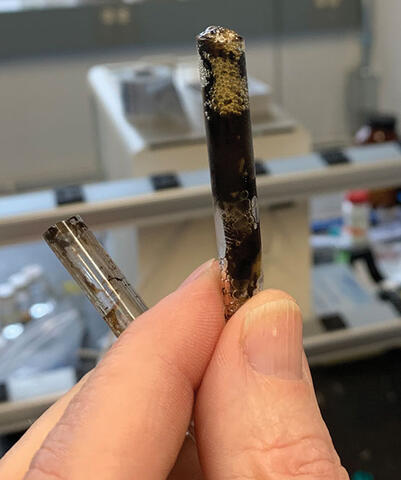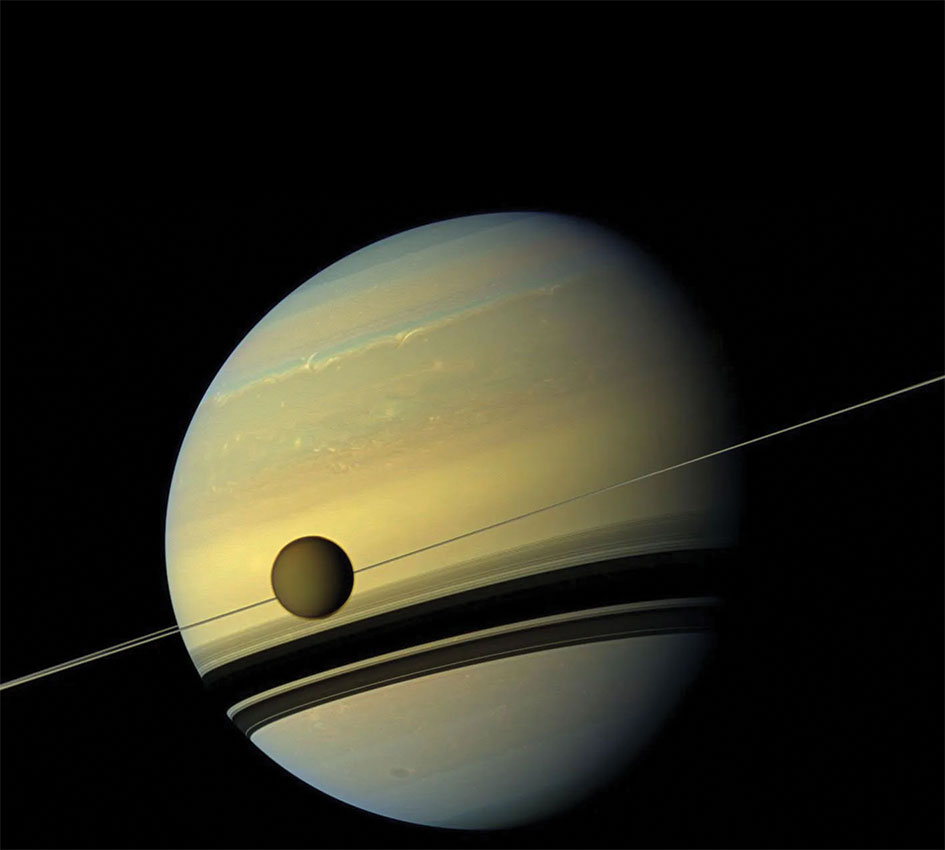SwRI scientists are studying Saturn’s moon Titan to assess its tidal dissipation rate, the energy lost as it orbits the ringed planet with its massive gravitational force, as well as how it maintains its unique nitrogen-rich atmosphere. Titan is the second largest moon in our solar system and the only one that has a significant atmosphere.
Confirming Theory about Atmosphere

To understand the persistent thick atmosphere on Saturn’s largest moon, SwRI worked with the Carnegie Institution for Science Laboratory to create laboratory experiments mimicking conditions at Titan’s rocky core. Heating and pressurizing tubes of organics produced nitrogen in the form of ammonia and methane gas, which is necessary to maintain Titan’s atmosphere.
SwRI teamed with the Carnegie Institution for Science to perform laboratory experiments to better understand how Saturn’s moon Titan can maintain its unique nitrogen-rich atmosphere.
“While just 40% the diameter of the Earth, Titan has atmospheric pressure that is 1.5 times the Earth’s, even with a lower gravity,” said SwRI’s Dr. Kelly Miller, lead author of a paper about these findings published in the journal Geochimica et Cosmochimica Acta. “Walking on the surface of Titan would feel a bit like scuba diving.”
The origin, age and evolution of this atmosphere has puzzled scientists since it was discovered in 1944.
“The presence of methane is critical to the existence of Titan’s atmosphere,” Miller says. “Reactions caused by sunlight remove methane, so it would disappear in about 30 million years, and Titan’s atmosphere might freeze onto its surface. Scientists think an internal source must replenish the methane.”
Miller’s 2019 paper published in the Astrophysical Journal proposed a model for how the atmosphere may have developed and is replenished. The paper theorizes that large amounts of highly complex organic materials are heated in Titan’s rocky interior, releasing nitrogen as well as carbon gases like methane. The gas then seeps out at the surface, where it forms a thick atmosphere around the moon.

Image courtesy of NASA/JPL-Caltech/Space Science Institute
Saturn’s moon Titan loses energy as it orbits the ringed planet with its massive gravitational force.
Tidal Energy Key To Composition
Understanding tidal dissipation helps scientists infer many other things about Titan, such as the makeup of its inner core and its orbital history.
“When most people think of tides they think of the movement of the oceans, in and out, with the passage of the Moon overhead,” said Dr. Brynna Downey, a postdoc in SwRI’s Solar System Science and Exploration Division. “However, when the Moon passes overhead, the rock is also responding, just less perceptively than water. But that little bit of gravity that the Moon is imposing is what we call tidal dissipation.”
To measure tidal dissipation on Titan, scientists have developed a way to infer dissipation rates based on the difference in its spin axis rotation from what would be expected absent any such force.
“Tidal dissipation in satellites affects their orbital and rotational evolution and their ability to maintain subsurface oceans,” Downey says. “Now that we have an estimate for the strength of tides on Titan, we discovered that it’s changing very quickly on a geologic timescale.”
A Science Advances paper by Downey and her co-author, Dr. Francis Nimmo of the University of California Santa Cruz, considered how the angle of Titan’s spin pole orientation relates to a tidal friction parameter, deducing aspects of Titan’s history from its current spin state.
For more information, visit Planetary Science.

